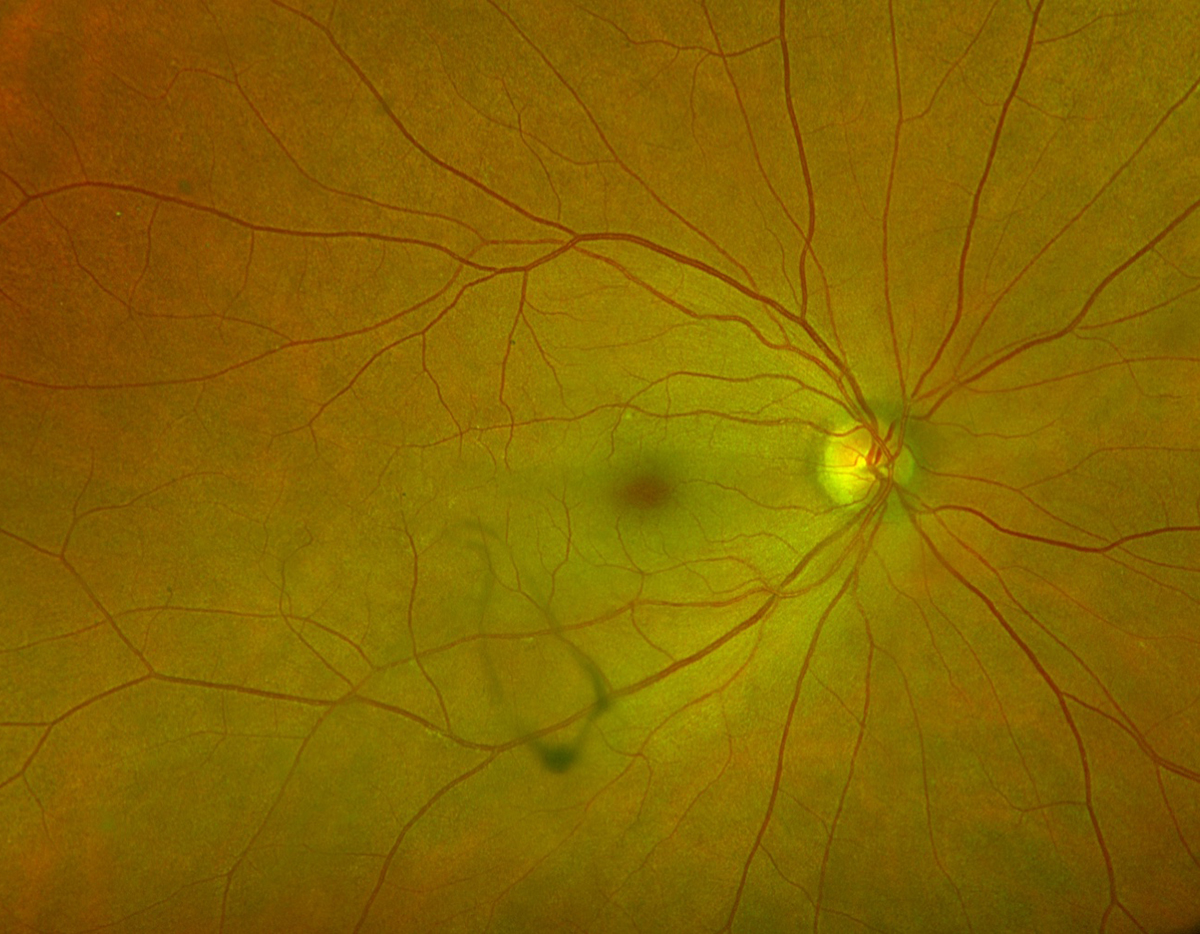 |
| Incidence of central retinal artery occlusion was significantly higher during months with lower temperatures and increased air pollution levels compared to warmer months. Photo: Rami Aboumourad, OD. Click image to enlarge. |
The medical community has previously identified an established connection between cold temperatures and an elevated risk of stroke. Central retinal artery occlusion (CRAO)—“a stroke of the eye” as it’s sometimes called—shares etiologic and risk factors with other ischemic vascular disorders. Researchers recently set out to determine if CRAO incidence would align with patterns observed in ischemic vascular diseases and ischemic cerebral strokes. They found it does indeed.
Their 15-year retrospective study confirmed a correlation not only with air temperature, but air pollution as well. It included a total of 432 patients who were newly diagnosed with CRAO in the region of southwestern Germany. Data demonstrates significant variations in incidence rates across months and seasons, with the highest proportion occurring in winter (30.4% of cases) and spring (26.4%), contrasted with the lower rates of 19.5% in summer and 23.7% in fall. Incidence during winter was 1.55 times higher than summer, and February had the highest cumulative adjusted incidence—11.7% of all cases occurred then—more than double that of June (5.4%), which was the month with the lowest incidence of CRAO.
Air pollutants also showed increased concentrations in the winter months. With the exception of O3 (ground level ozone), which peaks in the summer, pollutants NO2 (nitrogen dioxide), PM2.5 and PM10 (airborne particulate matter) were elevated in relation to lower temperatures. These pollutants infiltrate the respiratory system, suggesting they exacerbate vascular risk factors which then correlate with the rise in CRAO incidence.
“This study aligns with a growing body of evidence suggesting the potential influence of seasonal variations, climatic factors, and air pollution on vascular events,” stated the authors in their paper on the work for Frontiers in Neurology. “Notably, it marks the first instance of demonstrating seasonal fluctuations in CRAO incidence. However, further exploration is necessary to fully grasp the mechanisms connecting these seasonal shifts with CRAO occurrences. Understanding these mechanisms could pave the way for targeted public health interventions, particularly during high-incidence seasons, mitigating CRAO risks related to air pollution.”
The authors identified the study’s limitations, including the retrospective design focusing on one singular institution’s records and the fact that the location isn’t a city with extremely high levels of air pollution, and suggested further studies should be carried out in cities with higher concentrations of air pollutants or in regions with less pollution.
“This comprehensive 15-year analysis reveals evidence of seasonal and monthly variations in CRAO incidence, with a pronounced peak during winter,” the authors concluded. “These findings prompt further research into the underlying mechanisms and potential modifiable risk factors associated with these temporal patterns. Such investigations could ultimately lead to more effective and targeted preventive strategies to reduce the risk of CRAO.”
Gassel CJ, Andris W, Poli S, Bartz-Schmidt KU, Dimopoulos S, Wenzel DA. Incidence of central retinal artery occlusion peaks in winter season. Front Neurol 2024;22;15:1342491. |

